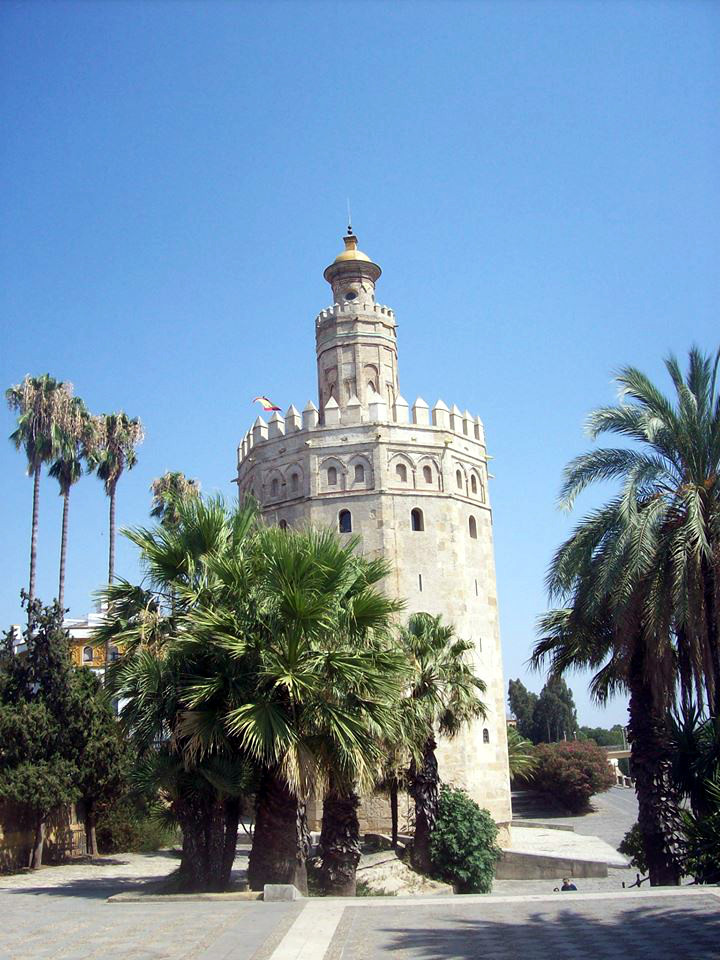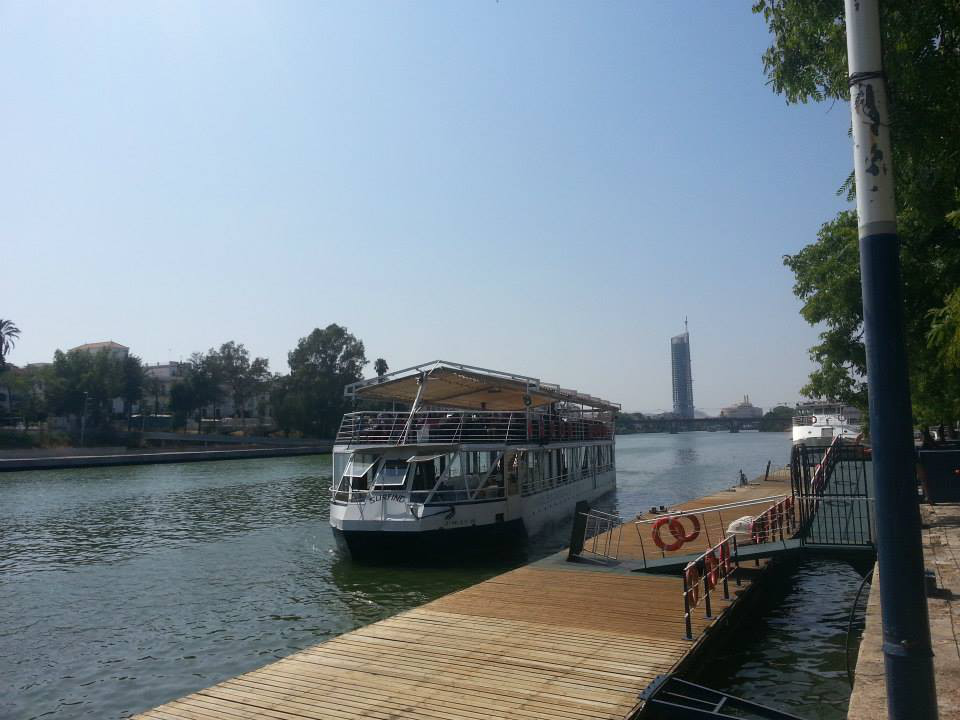 The Gold Tower (La Torre del Oro) of Seville is a unique tower located beside the Guadalquivir River. The tower measures 36 metres on height and can be seen from San Telmo Bridge. The first part of its structure was constructed in the 13th century when the Muslims lived in Andalusia, one century later it was improved and finished by Pedro I.
The Gold Tower (La Torre del Oro) of Seville is a unique tower located beside the Guadalquivir River. The tower measures 36 metres on height and can be seen from San Telmo Bridge. The first part of its structure was constructed in the 13th century when the Muslims lived in Andalusia, one century later it was improved and finished by Pedro I.
There are many suppositions about the name of the tower: On one hand some rumors say that the tower was used by the governors of the 14th century for storing the treasures (mostly gold) which came from America. On the other hand, other experts say that its name became from the color of its surface, that it reflected from the water of the river.
The Gold tower is in the centre of the Seville, close to the Cathedral, the Royal Alcazar the Bullfighting Ring of La Maestranza and near Maria Luisa Park, where is the most popular square of Seville: Plaza de España.
More buildings and monuments to visit in Seville
–  Plaza de España: Plaza de España is located in the middle of Maria Luisa Park, in the city center. The square has a fountain in the middle, rounded for a small lake and a building behind it that gives a traditional style to all the place.
Plaza de España: Plaza de España is located in the middle of Maria Luisa Park, in the city center. The square has a fountain in the middle, rounded for a small lake and a building behind it that gives a traditional style to all the place.
– Santa Maria Cathedral and La Giralda: Situated in the heart of Seville, near Guadaquivil river, the Gothic Santa María Cathedral in Seville is the largest Cathedral in Spain, and the largest Gothic Christian Cathedral in the world. In fact, the imposing Cathedral measures 116 metres in length and 76 metres in width, being together with the Zaragoza and the Toledo Cathedrals the three unique Gothic Cathedrals with five naves in Spain.
– Plaza Nueva: There is the Seville’s Town hall.
– Plaza de toros de la Maestranza.
– Archeological Museum and Arts Museum of Seville: Both of them are placed on Maria Luisa Park.
– Canal de Alfonso XIII: This watercourse passes just alongside Maria Luisa Park.
– Metropol Parasol: Metropol Parasol is the official name of this construction placed in Plaza de la Encarnación, near the city centre of Sevilla. Popularly, the structure is known as “Setas de la Encarnación” because of its similarity to a big-scale mushrooms.